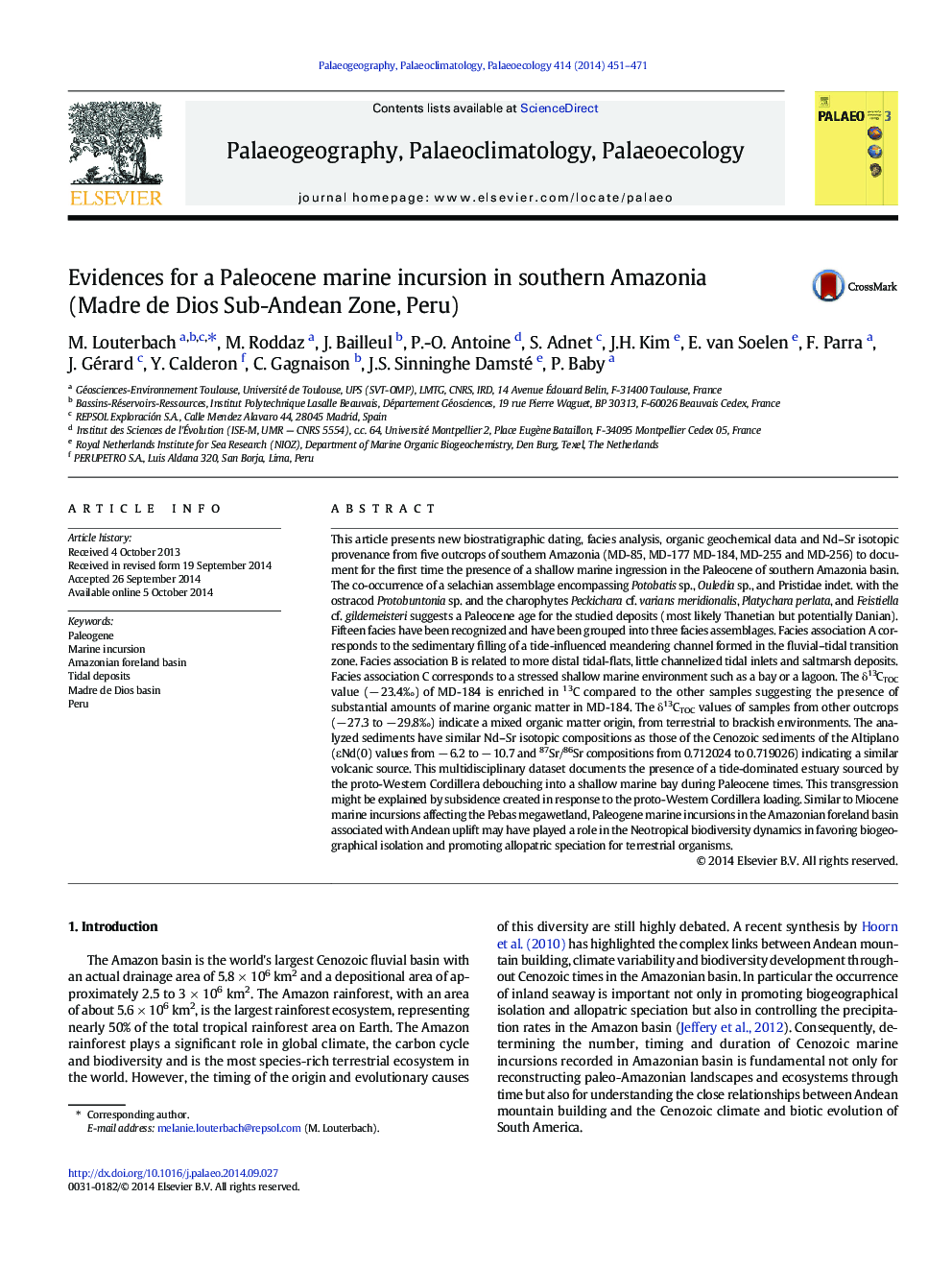| کد مقاله | کد نشریه | سال انتشار | مقاله انگلیسی | نسخه تمام متن |
|---|---|---|---|---|
| 6350010 | 1622176 | 2014 | 21 صفحه PDF | دانلود رایگان |

- We describe a Paleogene tide-dominated estuary debouching into a shallow-marine bay.
- The δ13CTOC values show a marine influence or a mixed terrestrial-marine.
- Nd-Sr isotopic provenance data show an Andean provenance.
- The incursion can be related to the proto-Western Cordillera tectonic loading.
This article presents new biostratigraphic dating, facies analysis, organic geochemical data and Nd-Sr isotopic provenance from five outcrops of southern Amazonia (MD-85, MD-177 MD-184, MD-255 and MD-256) to document for the first time the presence of a shallow marine ingression in the Paleocene of southern Amazonia basin. The co-occurrence of a selachian assemblage encompassing Potobatis sp., Ouledia sp., and Pristidae indet. with the ostracod Protobuntonia sp. and the charophytes Peckichara cf. varians meridionalis, Platychara perlata, and Feistiella cf. gildemeisteri suggests a Paleocene age for the studied deposits (most likely Thanetian but potentially Danian). Fifteen facies have been recognized and have been grouped into three facies assemblages. Facies association A corresponds to the sedimentary filling of a tide-influenced meandering channel formed in the fluvial-tidal transition zone. Facies association B is related to more distal tidal-flats, little channelized tidal inlets and saltmarsh deposits. Facies association C corresponds to a stressed shallow marine environment such as a bay or a lagoon. The δ13CTOC value (â 23.4â°) of MD-184 is enriched in 13C compared to the other samples suggesting the presence of substantial amounts of marine organic matter in MD-184. The δ13CTOC values of samples from other outcrops (â 27.3 to â 29.8â°) indicate a mixed organic matter origin, from terrestrial to brackish environments. The analyzed sediments have similar Nd-Sr isotopic compositions as those of the Cenozoic sediments of the Altiplano (εNd(0) values from â 6.2 to â 10.7 and 87Sr/86Sr compositions from 0.712024 to 0.719026) indicating a similar volcanic source. This multidisciplinary dataset documents the presence of a tide-dominated estuary sourced by the proto-Western Cordillera debouching into a shallow marine bay during Paleocene times. This transgression might be explained by subsidence created in response to the proto-Western Cordillera loading. Similar to Miocene marine incursions affecting the Pebas megawetland, Paleogene marine incursions in the Amazonian foreland basin associated with Andean uplift may have played a role in the Neotropical biodiversity dynamics in favoring biogeographical isolation and promoting allopatric speciation for terrestrial organisms.
Journal: Palaeogeography, Palaeoclimatology, Palaeoecology - Volume 414, 15 November 2014, Pages 451-471